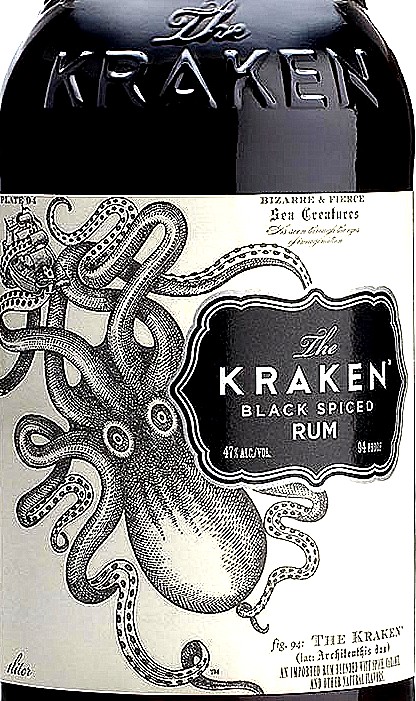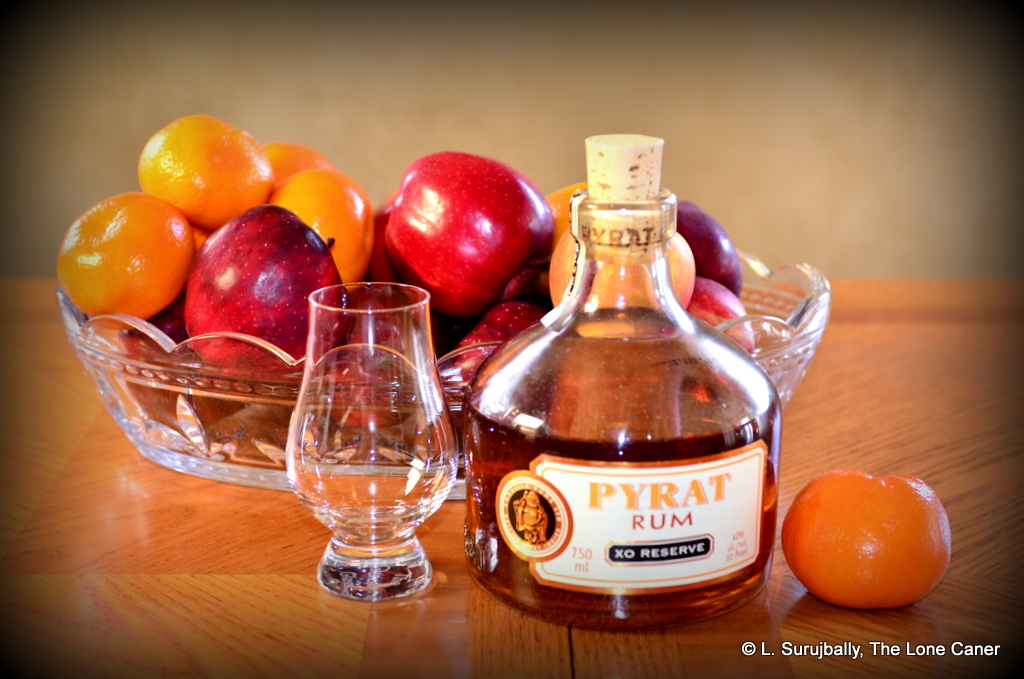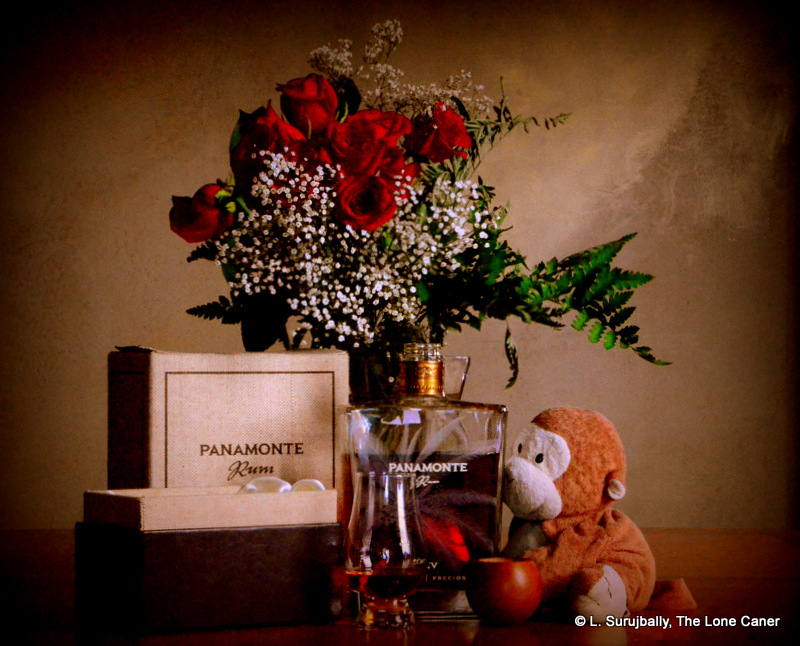
Bottled evening sunset. Among the best of all the 40% Panamanian rums I’ve tried thus far…though that is not quite what the endorsement it seems.
The Panamonte XXV has, since its introduction, received such rave reviews across the board – it may be one of the most critic-proof rums ever made – that it’s led one reviewer (who I note has not done a formal write up or, perhaps, even tried it) to complain vociferously and with unbecoming language about the lemming like behavior of the bloggers who are supposedly in the pockets of the industry and who put over-the-top positive spins on the rum in order to promote it for their own (inferred) nefarious purposes. I don’t agree with this attitude – there are far too few writers out there who love and promote rums, so we should encourage the reviewers, not viciously diss them – but there’s no question that for a really expensive product, perhaps we should really take a hard look and not be too swayed by cachet or price just because it has cachet and price.
Bearing that in mind, and given that I had dropped $400+ on a bottle of the good stuff last year, I felt it right to check how it rated against other rums of either similar age, similar provenance or similar profile, like the Arctic Wolf did in his famous dissing of the Appleton 30. So I ran the Panamonte XXV past the Cadenhead Panama 8 year old, the Rum Nation Panama 18 and 21 year old, the Ron de Jeremy and the Panama Red Overproof, as well as the Abuelos 7 and 12. And just to make life interesting, I added the El Dorado 25 40%, because of its age.
The Panamonte, right off, had a bottle that was impressive…a flagon, more like, gold-tipped-cork and fancy lettering (same as the St Nicholas Abbey rums, just different etching and cork), all ensconced in a two-piece box that you’d better hold carefully, ‘cause if the snaps on either side break while you wrestle it one-handed, the bottom might just pop out like a stock market bubble, and all your hard earned money will go the way of your portfolio. But it’s kinda faux-handmade retro-cool, and I always liked that. Nothing irritates me more than a super premium, highly priced rum, coming in a shabby, cheap-ass, cardboard paper box (though I must concede the overall put-together-ness of the box wasn’t all that great either) .
The rum itself was amber and copper in hue. Soft and warm, the initial scents curling lazily from the glass were well behaved, rather dense clouds of honey, lightly toasted walnuts (or were those pecans?), blossoms like lilac petals, dark fruits like raisins, plums, just-barely-ripe peaches and bananas. Soft fruits, not citrus, and that set the stage for a rum that was not at all sharp, but as comforting as a feather bed in the winter. Maybe with your plump, soused spouse in it.
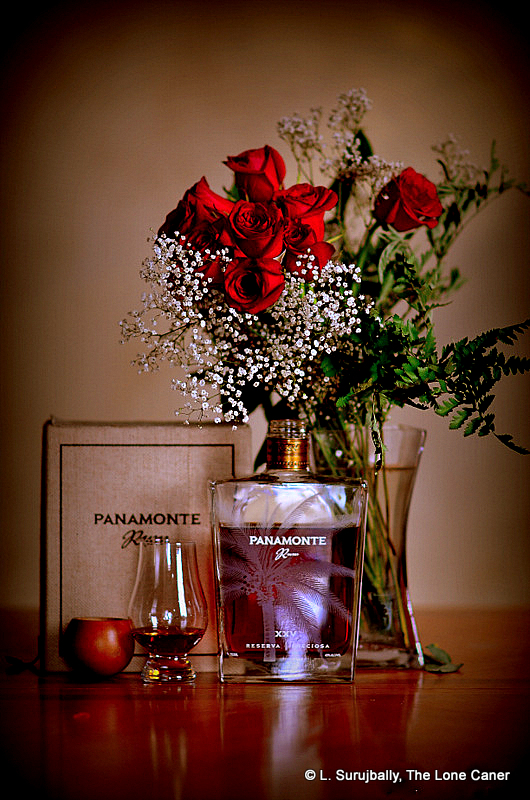 The Panamonte XXV may be among the smoothest, most unaggressive medium-bodied rums I’ve ever tasted, which is both a good or a bad thing depending on your personal preferences. The arrival stroked the palate with the gentle touch of honey – maybe maple syrup is a better descriptor – as soft as your favourite pooch’s begging eyes: stroke me, master, because I love you. Evolving nuances of coconut shavings, nutmeg, caramel, cinnamon, cumin, a light dusting of caramel and sugars followed through, enhanced by some light tobacco and leather notes – and hardly any oak or citrus spiciness asserting itself. Quite a change from the aridity and powerful eff-off of the Velier Albion 1994. It had an extraordinary balance that allowed no one taste to hold the high ground or dominate the profile at the expense of any other. It was, in fine, a rum that could be dreamily sipped and savoured all evening long. It might actually be a conversation stopper, for who on earth would want to do anything except make gurgling noises of enjoyment while trying to extract that very last nuance of flavour from it? As for the finish, well, one should not expect anything too epic from 40%, yet even here, warm and breathy aromatic hints of fleshy fruits and tobacco with a sly hint of oak and unsweetened chocolate were the last things to titillate the senses…before I poured yet another glass.
The Panamonte XXV may be among the smoothest, most unaggressive medium-bodied rums I’ve ever tasted, which is both a good or a bad thing depending on your personal preferences. The arrival stroked the palate with the gentle touch of honey – maybe maple syrup is a better descriptor – as soft as your favourite pooch’s begging eyes: stroke me, master, because I love you. Evolving nuances of coconut shavings, nutmeg, caramel, cinnamon, cumin, a light dusting of caramel and sugars followed through, enhanced by some light tobacco and leather notes – and hardly any oak or citrus spiciness asserting itself. Quite a change from the aridity and powerful eff-off of the Velier Albion 1994. It had an extraordinary balance that allowed no one taste to hold the high ground or dominate the profile at the expense of any other. It was, in fine, a rum that could be dreamily sipped and savoured all evening long. It might actually be a conversation stopper, for who on earth would want to do anything except make gurgling noises of enjoyment while trying to extract that very last nuance of flavour from it? As for the finish, well, one should not expect anything too epic from 40%, yet even here, warm and breathy aromatic hints of fleshy fruits and tobacco with a sly hint of oak and unsweetened chocolate were the last things to titillate the senses…before I poured yet another glass.
The rum, then, is a Panamanian molasses-based rum aged for 25 years in used oak barrels (standard), and is a product of the same crew who brought you the above-average (but spiced, I suspect) Panama Red I looked at not too long ago – Jim Wasson of Panamonte, and “Don Pancho” of Zafra, Panama Red and Ron de Jeremy…er, fame. It shares something of the generalized softness I sensed in the other Panamanians like the Abuelo 12 or the Rum Nation Panama 21 (the RN 18 is a tad more aggressive), but lacks the youthful yobbishness of the Cadenhead. And it’s different from the El Dorado 25 year old 40%, being not quite as dark or deep, and a shade less sweet (that’s a good thing, by the way). It’s probably better than all of them, though I’d say the RN 21 showcases a little more risk.
So forget my remark about being “critic-proof” – this rum is critic-obliterating. Stripped of the marketing hype (“…every single drop…” – yawn) it’s not hard to see why, because think of all the levels on which it succeeds so swimmingly – it’s smooth, it’s gentle, it tastes great, it releases its character in measured teasing doses, and is bottled at a cushy 40%. What’s not to like? I mean, it’s as if in some backroom office, a blending engineer and management type set out to tick all the boxes, making sure the greatest mass of taste was catered to (they emulated Bacardi, perhaps), and then ratcheting it all up a notch or five and pricing it to match. It makes perfect commercial sense to issue this twenty five year old as it has been, because this is the way most will try it and like it and buy it.
(#145. 87/100)
Opinion
For me, it may simply be too much of a good thing.
This is where I have to tread warily, and be clear about the rationale for my ambivalence. For what it is – a 40%, aged rum – it’s perfectly fine, so its intrinsic quality is not at issue (and my score reflects that). It may be about as good as any such product can or will ever get. So if the rum is so good, you ask, why the beef and bitching? Because, reader, although I haven’t tried as many rums as the Burr Brothers, Dave Russell, Ed Hamilton, or the Arctic Wolf, I have tried a lot and thought deeply about why some appealed to me but not others, tried to understand why I liked stuff I didn’t before, or dislike stuff I once loved. And there you have it – it’s not the rum that has changed, it’s me.
I’ve moved on from commonly available, widely appreciated, well known products that are good to great, from soft and warm and smooth 40% rums, to rums that are stronger, more intriguing, that have the cheerfully experimental insanity of, oh, a seventies Lambo. Rums that encourage some discernment, some thinking. Rums that don’t give a sweet rat’s behind about running with the crowd. Rums that are really different yet still succeed, somehow (unlike Downslope Distilling’s misguided attempt at a six month old wine aged rum). The Panamonte XXV is without doubt one of the best – if not the best – of the Panamanian rums bottled at 40% I’ve ever tried, and for sure I’ll be sharing it with all my friends when they come over.
But it would have been greater still, I believe, had its makers had the courage to think a little more out of the ticked boxes they were intent on filling, the way Rum Nation, Velier’s full proof line, or even the Scottish rum makers do (this is why the RN Demerara 23 is better than the El Dorado 25, for example); if it could stand out from all the commercial supersellers that fly off the shelves so briskly — and go for something awesome, snarling and unique, that would rear head and shoulders above any other similarly aged product. Something that would not be a merely incremental bettering of its forebears, but a true game changer that people would whisper about in awe and envy, with bowed heads and bated breath, every time they timidly approached the mere wrapping paper that once embraced it.
Which is too bad, really, because what it leaves us with is that while I can express my admiration for the XXV, what I can’t do is rave from the mountaintops about it.
Other
Thanks and much love goes to my boy The Little Caner, who managed to hold in his irritation at my pilfering his favourite stuffed toy for use in the photographs.

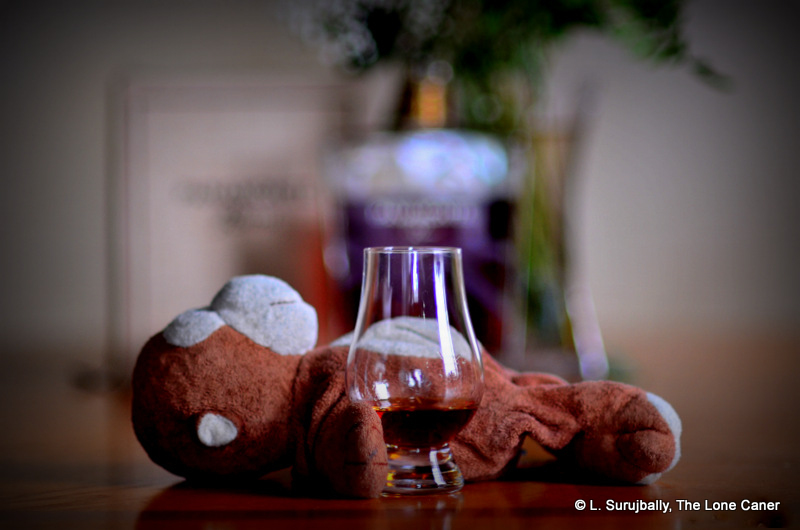

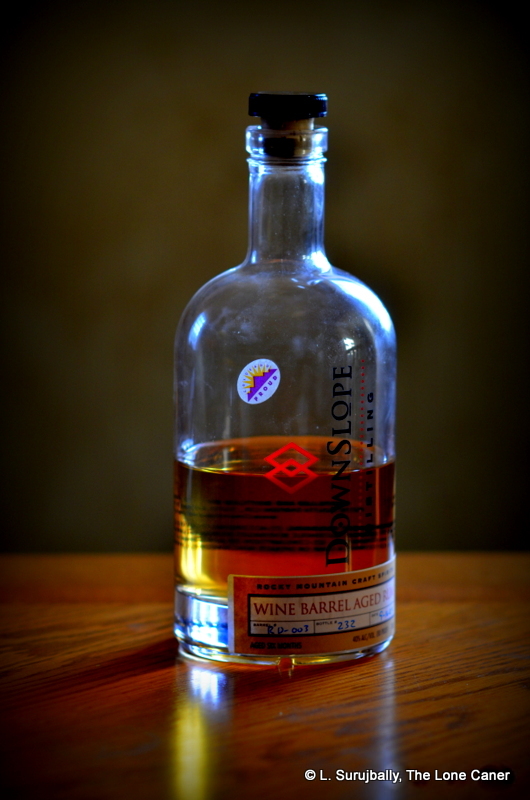
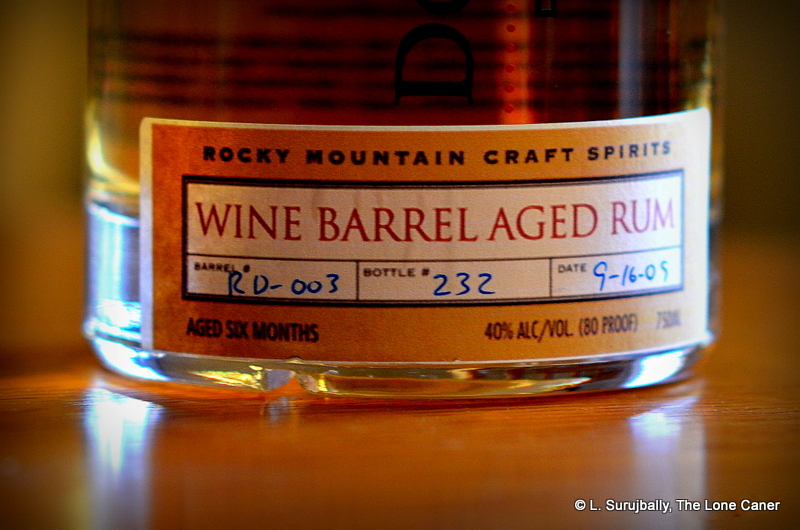
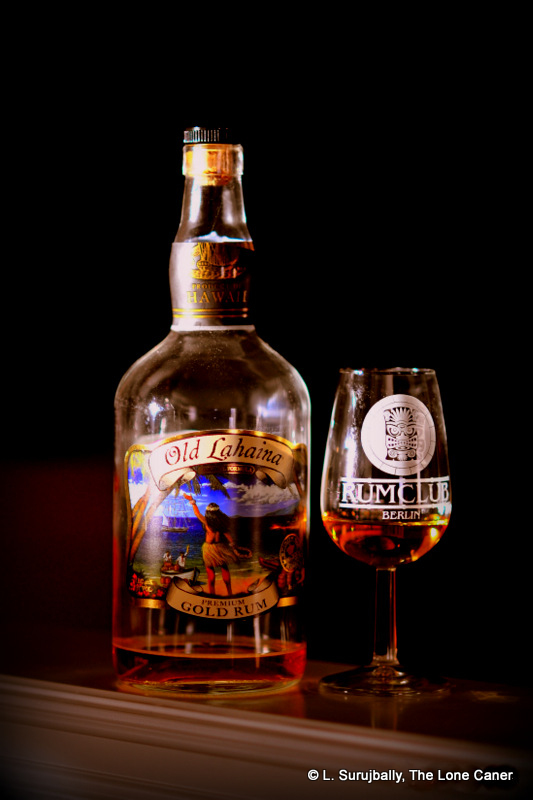

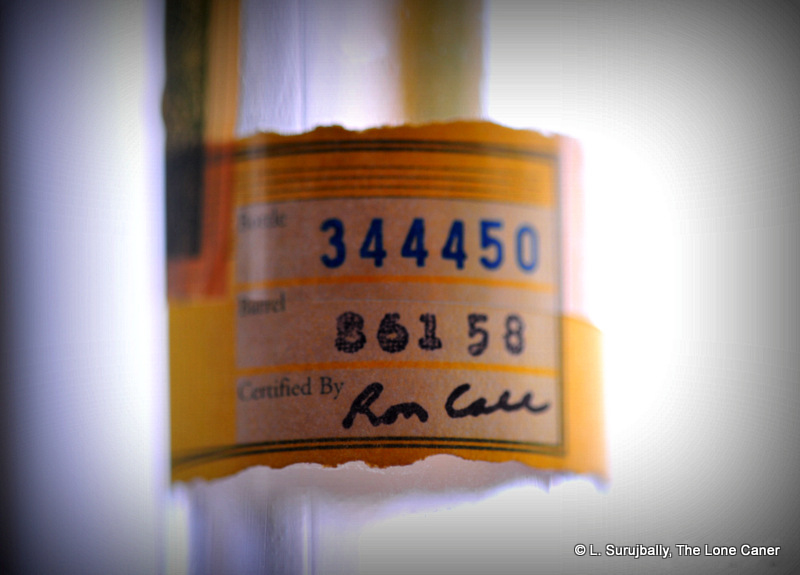
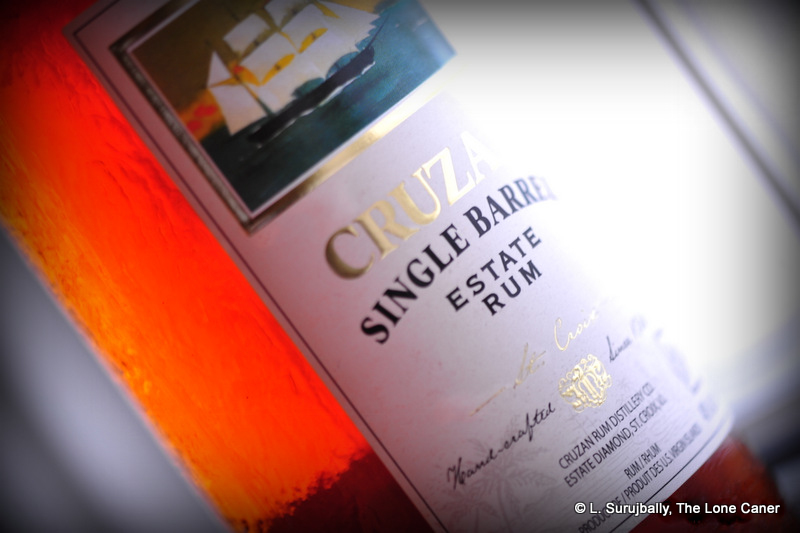
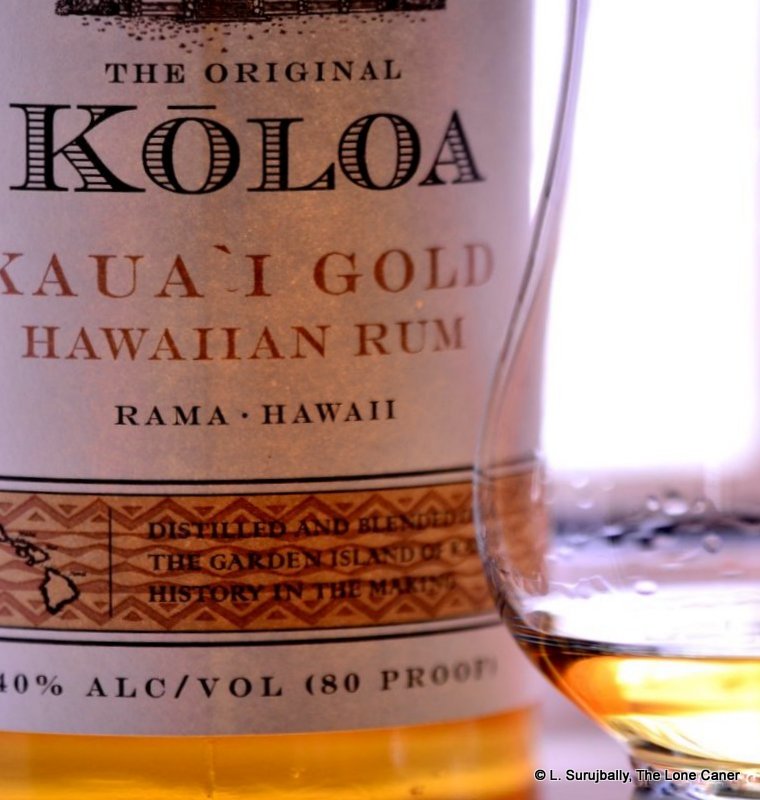
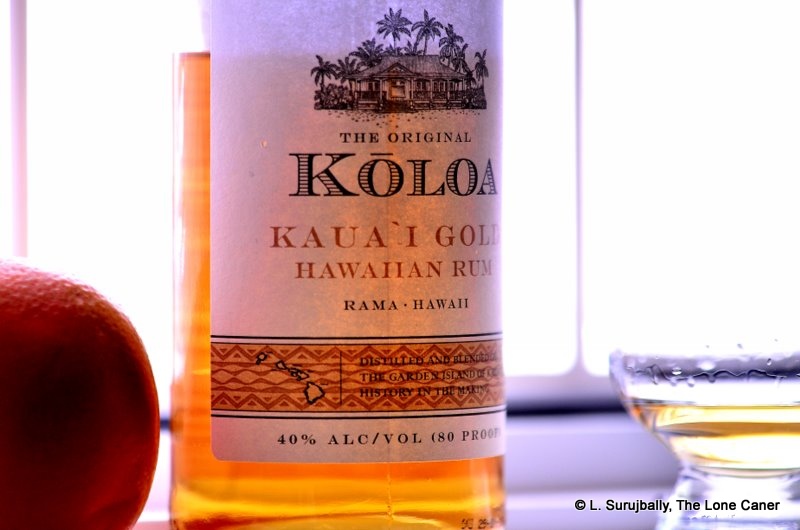
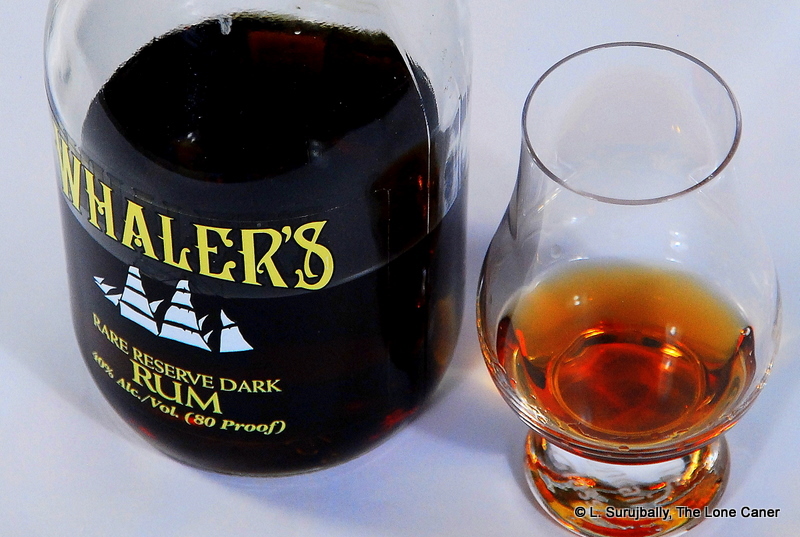

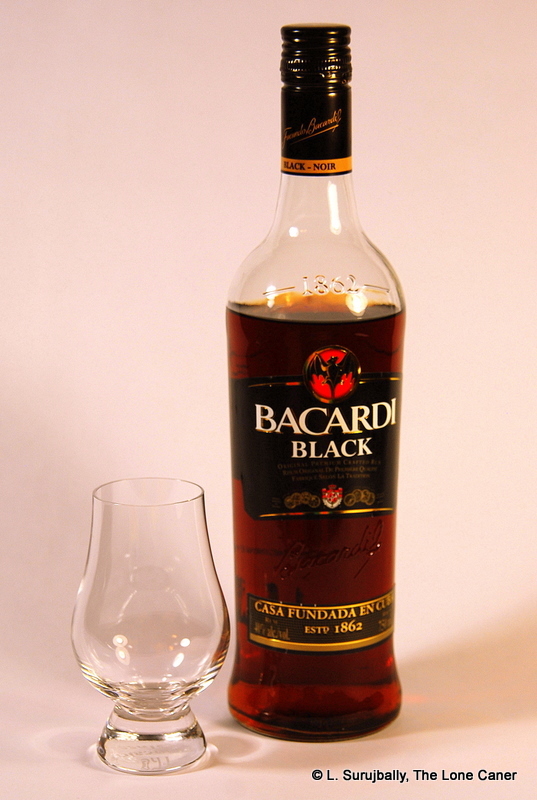
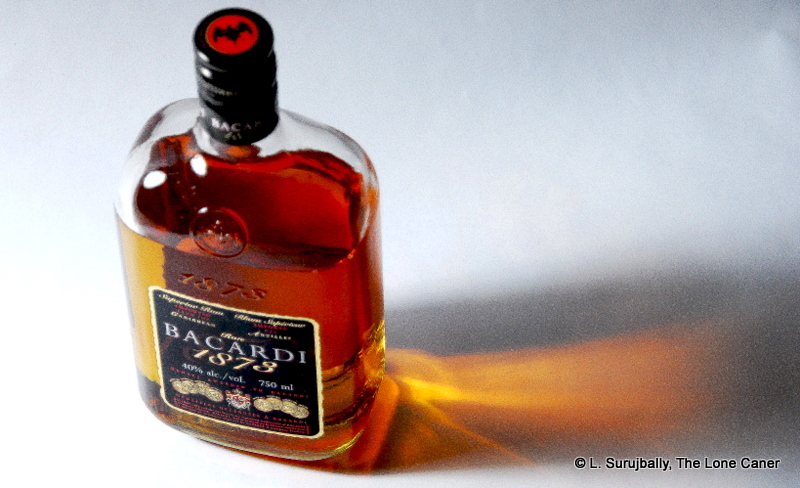
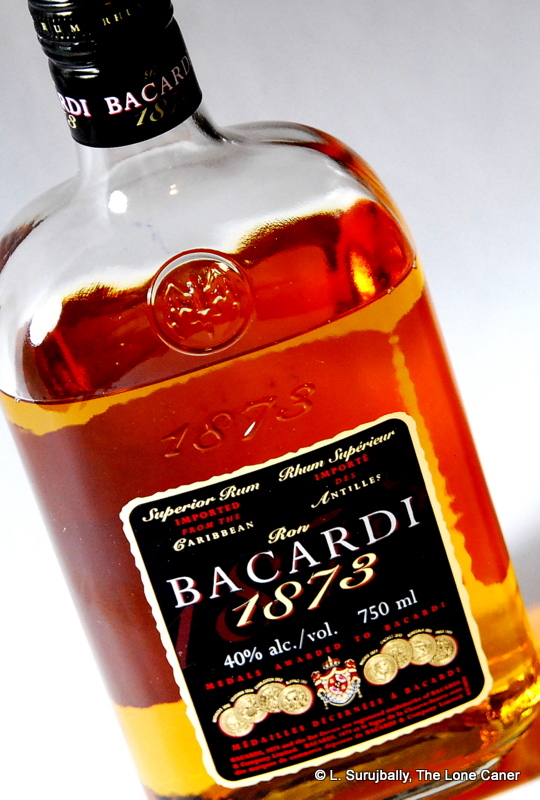
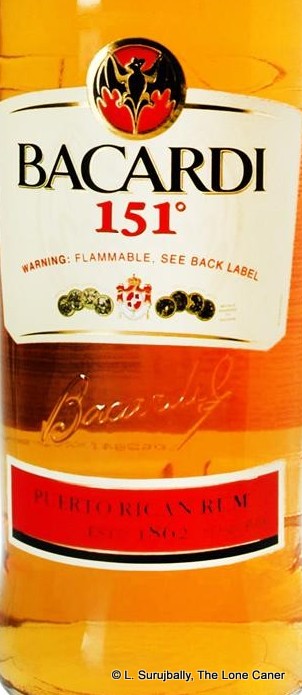 First published 01 October 2010 on Liquorature.
First published 01 October 2010 on Liquorature.